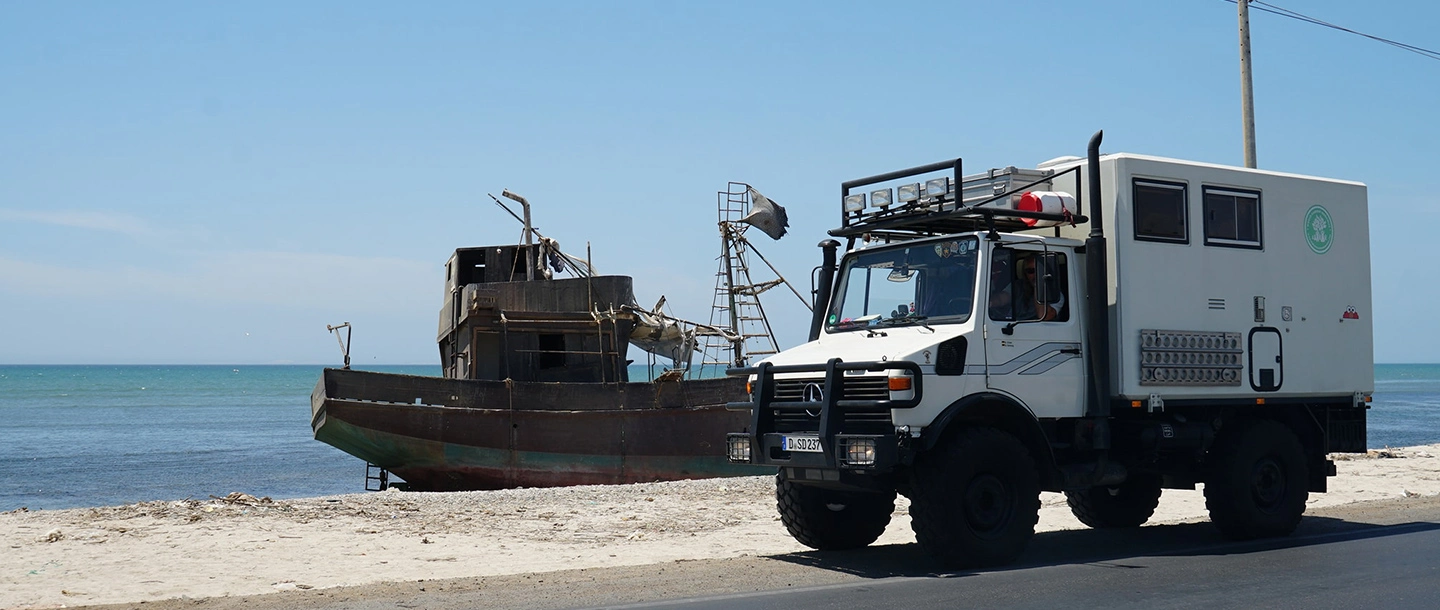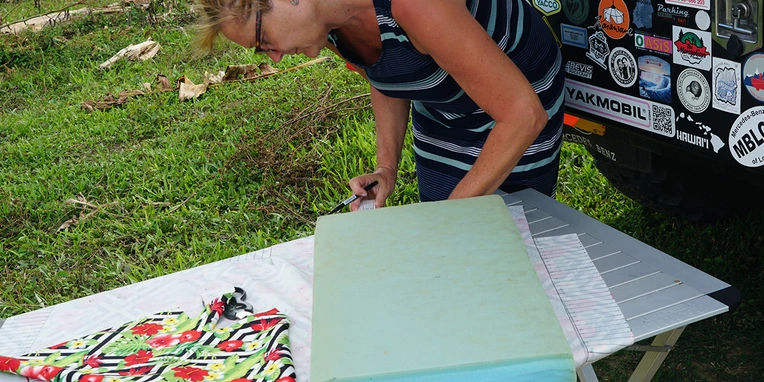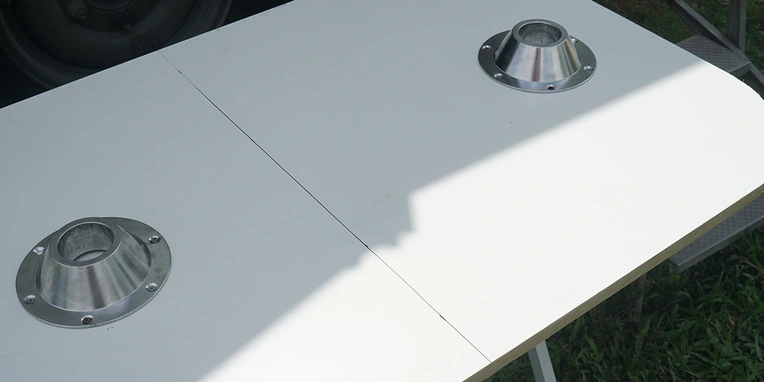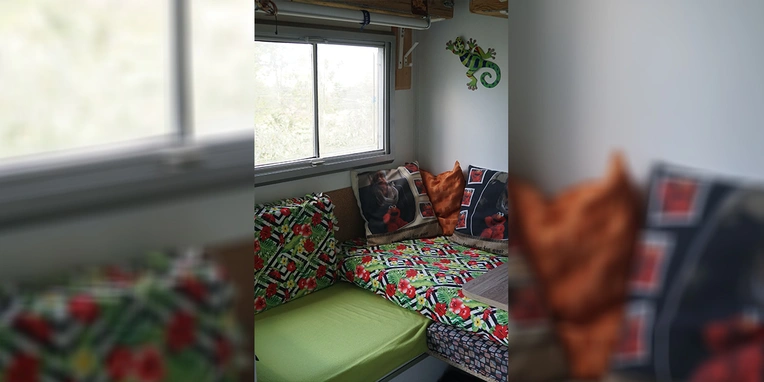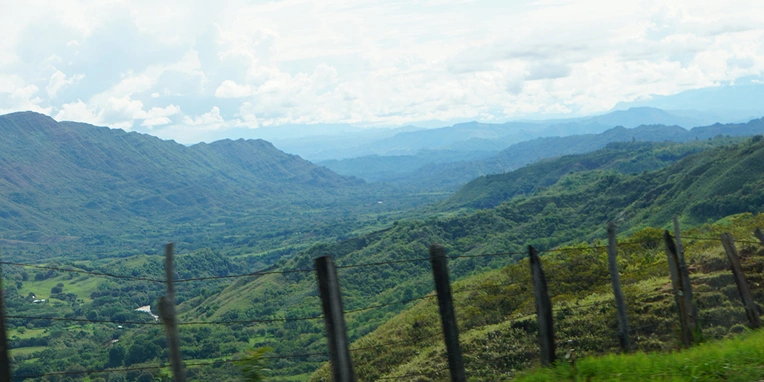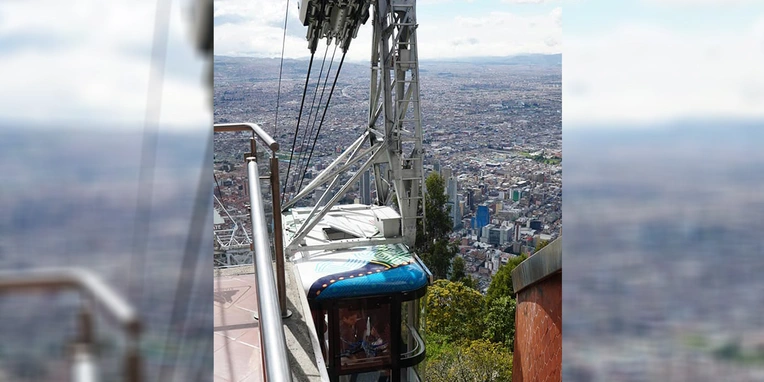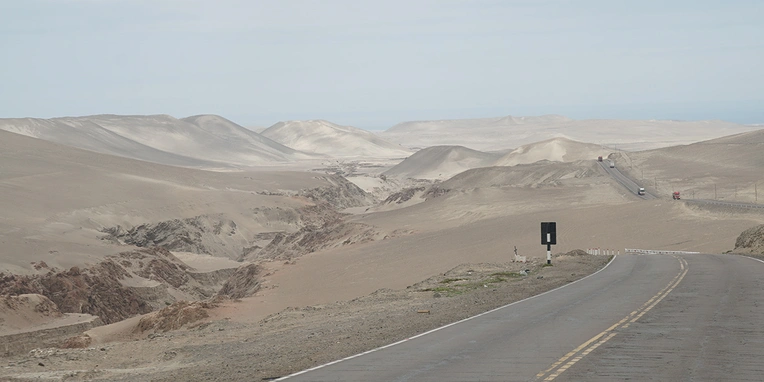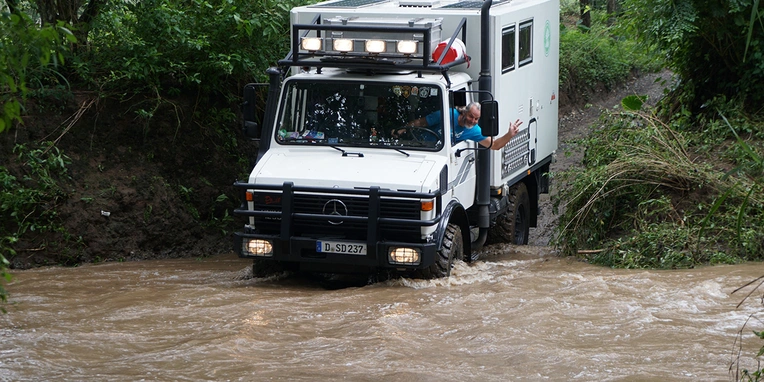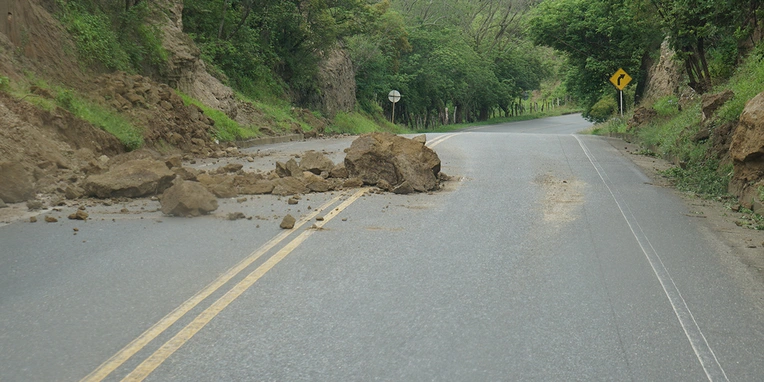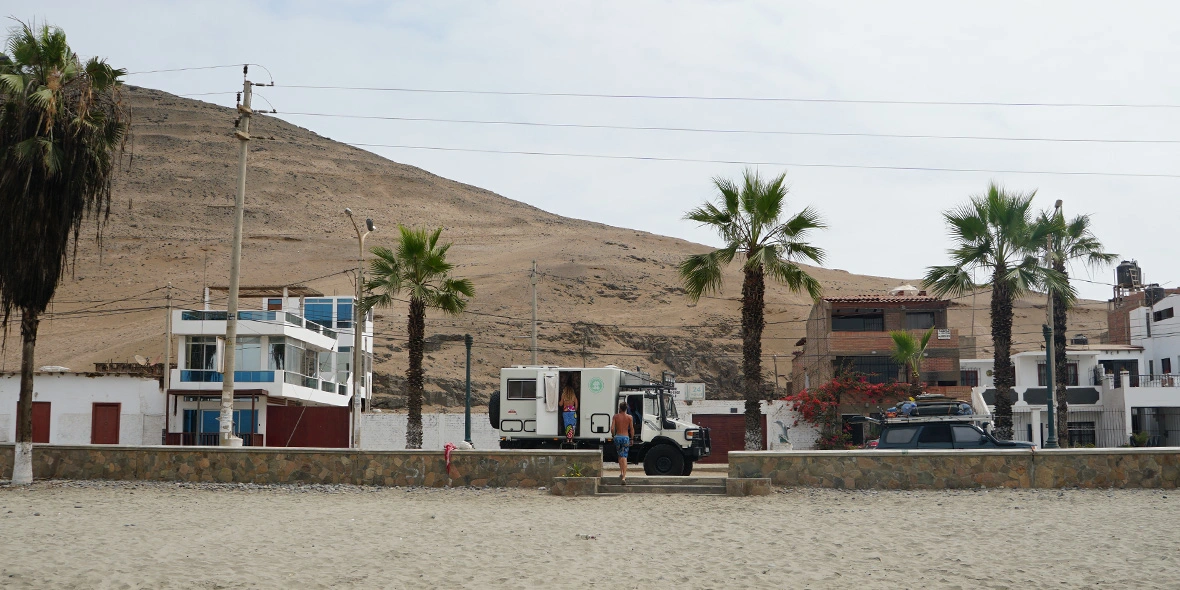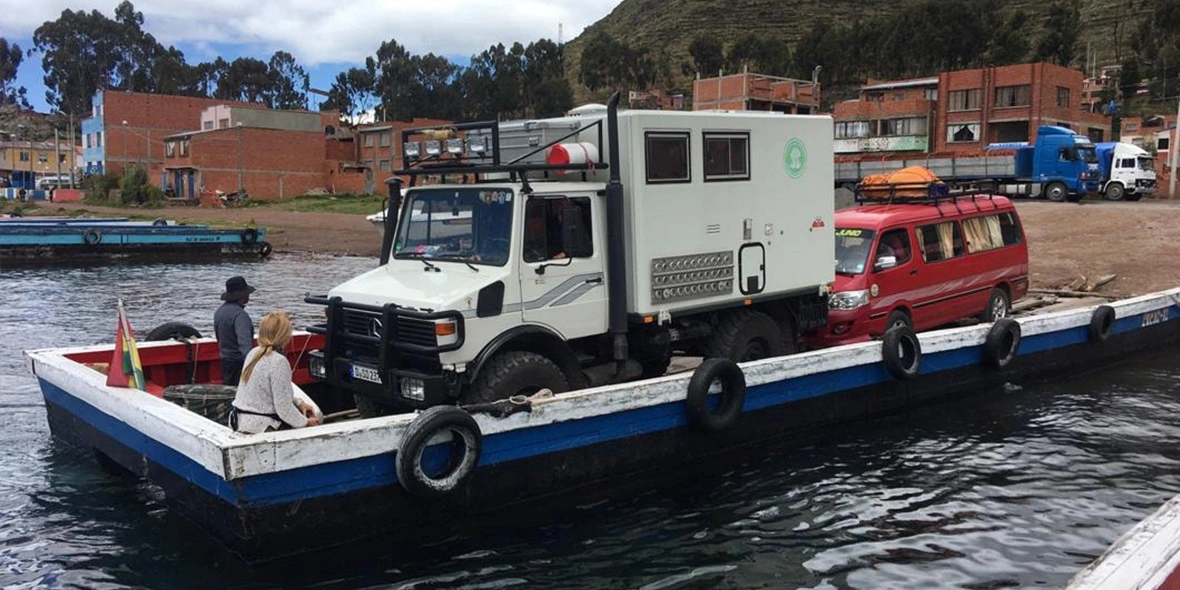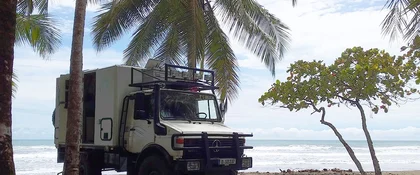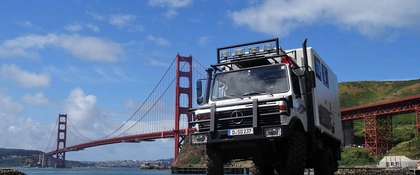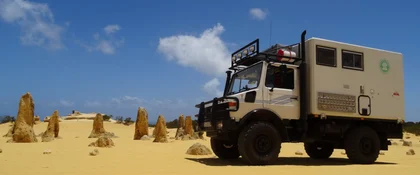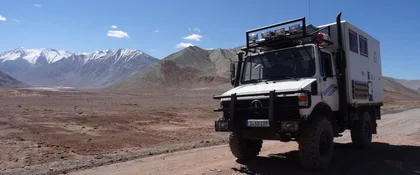On a round-the-world trip with the Unimog expedition vehicle – Part 5.
Asia, Australia, North America, Central America – and now South America: Sonja, Dirk and their ELMO, a Unimog U 1450 L with a camper body, have also experienced quite a lot on the last continental station of their world tour. In this interview, Team ELMO tells us about extensive journeys through the jungles of Colombia, about their warm encounters with overland tourists in Ecuador and their adventurous crossing to Bolivia.
The last time we heard from you was in Panama. ELMO was sailing on a ship across the Panama Canal to South America. Where did you receive your beloved Unimog again?
Sonja: In Colombia – more precisely in Cartagena, a port city with a very beautiful old town. And fortunately the vehicle remained intact. Because three of the four other vehicles on board the ship were pinned up. ELMO was damaged later on the crossing to Germany, but we will come to that in the next part of the interview.
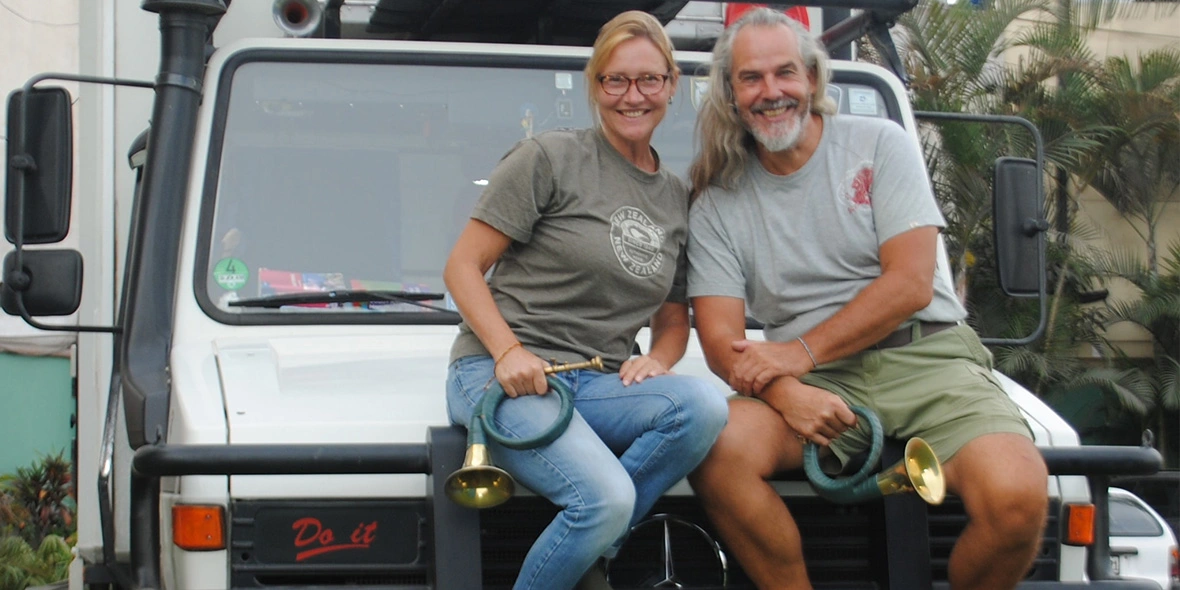
On good roads through the Colombian rainforest.
All right. So you were happily reunited in Colombia. What did you see and experience there?
Dirk: For us, Colombia stands for rainforest, beautiful mountains and long passes. Despite good roads – a pleasant change for ELMO and also for us – we only managed 80 km a day in some places. Especially downhill it took forever. We only use second and third gear, because otherwise the brakes get hot.
Sonja: On these mountain roads it became especially interesting in the narrow bends. Residents stand at these hairpin bends and stop traffic when trucks arrive. Because those trucks need the whole area of the road to get around. The drivers pay the equivalent of a few cents for this service. And so it goes on and on at many passes, up and down mountains.
Time for interior fittings.
And how did your Unimog tolerate the Colombian mountains?
Dirk: Perfect, it is agile and robust anyway. But after a year and a half of travelling around the world, we have now had the interior rebuilt in Colombia.
Sonja: Exactly, it is not always pleasant to be outside on such a journey. Either it is too hot or you are eaten by insects. The problem was that we always had to decide before the conversion: table or bed. And rebuilding is annoying at some point. So I said, 'let's cut the back cushions and cut the table in half. Then we can have half a bed, two seats and part of the table at the same time.' In the end it became really comfortable.
